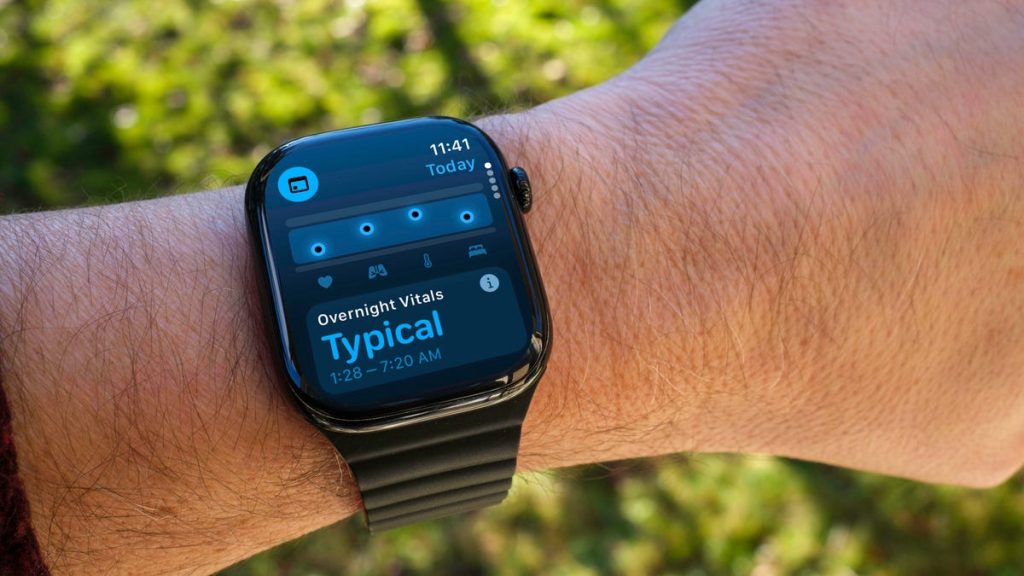7 Everyday Tips to Get the Most Value Out of Your Apple Watch – CNET

From tracking fitness to lighting your way in the dark, the popular timepiece has more to offer than you might think.
The Apple Watch is a small but highly influential tech gadget that can help in all sorts of areas of your life. Maybe you got one to help meet your new year’s wellness goals or as a fitness tracker for adventures both high and low. Or perhaps you just wanted a great-looking timepiece with extra smarts. Whatever the reason, I’m willing to bet you’ve only scratched the surface (but not the screen) of what the Apple Watch can do.Here are some of my favorite everyday tips that save time and trouble.Also, check out how to add custom watch faces and ways to extend the utility of an old Apple Watch you might have in a drawer.Until WatchOS 10.0, you could swipe from the left or right edge of the screen to switch active watch faces, a great way to quickly go from an elegant workday face to an exercise-focused one, for example. Apple removed that feature, likely because people were accidentally switching faces by brushing the edges of the screen.Swipe from the edge to switch between faces.However, the regular method involves more steps (touch and hold the face, swipe to change, tap to confirm) and people realized that the occasional surprise watch face change wasn’t really so bad. Therefore, as of version 10.2, including the current WatchOS 11.2, you can turn the feature on by toggling a setting: Go to Settings > Clock and turn on Swipe to Switch Watch Face.Wearing your Apple Watch while sleeping offers a trove of information — and not just about how you slept last night. If you don the timepiece overnight, it tracks a number of health metrics. A new feature in WatchOS 11 gathers that data into the Vitals app that reports on the previous night’s heart rate, respiration, body temperature (on recent models) and sleep duration. The Vitals app can also show data collected during the previous seven days — tap the small calendar icon in the top-left corner.(If you own a watch model sold before Jan. 29, 2024, you’ll also see a blood oxygen reading. On newer watches in the US, that feature is disabled due to an intellectual property infringement fight.) The Vitals app reports heart and health trends collected while you sleep.How is this helpful? The software builds a baseline of what’s normal for you. When the values stray outside normal ranges, such as irregular heart or respiratory rates, the Vitals app reports them as atypical to alert you. It’s not a medical diagnosis, but it can prompt you to get checked out and catch any troubles early.Bring up the Smart Stack using the crown or by swiping.The Smart Stack is a place to access quick information that might not fit into what Apple calls a “complication” (the things on the watch face other than the time itself, such as your Activity rings or the current outside temperature). When viewing the clock face, turn the digital crown clockwise or swipe from the bottom of the screen to view a series of tiles that show information such as the weather or suggested photo memories. This turns out to be a great spot for accessing features when you’re using a minimal watch face that has no complications.The Smart Stack is also where Live Activities appear: If you order a food delivery, for example, the status of the order appears as a tile in the Smart Stack (and on the iPhone lock screen). And because it’s a timely activity, the Smart Stack becomes the main view instead of the watch face.Live Activities like mobile orders appear in the Smart Stack.Some people find that too intrusive. To disable it, on your watch open the Settings app, go to Smart Stack > Live Activities and turn off the Auto-Launch Live Activities option. You can also turn off Allow Live Activities in the same screen if you don’t want them disrupting your watch experience.Apple’s apps that use Live Activities are listed there if you want to configure the setting per app, such as making active timers appear but not media apps such as Music. For third-party apps, open the Watch app on your iPhone, tap Smart Stack and find the settings there.When the Smart Stack first appeared, its usefulness seemed hit or miss. In WatchOS 11, Apple seems to have improved the algorithms that determine which widgets appear — instead of it being an annoyance, I find it does a good job of showing me information in context. But you can also pin widgets that will show up every time you open the stack.For example, I use 10-minute timers for a range of things. Instead of opening the Timers app (via the App list or a complication), I added a single 10-minute timer to the Smart Stack. Here’s how:Add specific widgets to the Smart Stack.The widget appears in the stack, but it may get pushed down in favor of other widgets the watch thinks should have priority. In that case, you can pin it to the top of the list: While editing, tap the yellow Pin button. That moves it up, but Live Activities can still take precedence.You’ve probably used the flashlight feature of your phone dozens of times, but did you know the Apple Watch can also be a flashlight? Instead of a dedicated LED (which phones also use as a camera flash), the watch’s full screen becomes the light emitter. It’s not as bright as the iPhone’s, nor can you adjust the beam width, but it’s perfectly adequate for moving around in the dark when you don’t want to disturb someone sleeping.To activate the flashlight, press the side button to view Control Center and then tap the Flashlight button. That makes the entire screen white — turn the Digital Crown to adjust the brightness. It even starts dimmed for a couple of seconds to give you a chance to direct the light away so it doesn’t fry your eyes.Your Apple Watch can double as a hands-free flashlight.The flashlight also has two other modes: Swipe left to make the white screen flash on a regular cadence or swipe again to make the screen bright red. The flashing version can be especially helpful when you’re walking or running at night to make yourself more visible to vehicles.Press the Digital Crown to turn off the Flashlight and return to the clock face.Closing your exercise, movement and standing rings can be great motivation for being more active. Sometimes, though, your body has other plans. Until WatchOS 11, if you became ill or needed to be on a long-haul trip, any streak of closing those rings that you built up would be dashed.Now, the watch is more forgiving (and practical), letting you pause your rings without disrupting the streak. Open the Activity app and tap the Weekly Summary button in the top-left corner. Scroll all the way to the bottom (take a moment to admire your progress) and tap the Pause Rings button. You can choose to pause them for today, until next week or month, or set a custom number of days.Give yourself a break when needed and pause your exercise rings.When you’re ready to get back into your activities, go to the same location and tap Resume Rings.Many workouts start with a three-second countdown to prep you to be ready to go. That’s fine and all, but usually when I’m doing an Outdoor Walk workout, for example, my feet are already on the move.Instead of losing those steps, tap the countdown once to bypass it and get right to the calorie burn.Don’t forget, the Apple Watch is a small computer on your wrist, and every computer will have glitches. Every once in a while, for instance, an app may freeze or behave erratically.On a Mac or iPhone, it’s easy to force a recalcitrant app to quit and restart, but it’s not as apparent on the Apple Watch. Here’s how:You can force-quit an app on the Apple Watch.Keep in mind this is only for times when an app has actually crashed — as on the iPhone, there’s no benefit to manually quitting apps.These are some of my favorite Apple Watch tips, but of course there’s a lot more to the popular smartwatch. Be sure to also check out which new health features are expected in the next models and Lexy Savvides’ review of the Series 10.
Source: https://www.cnet.com/tech/mobile/7-everyday-tips-to-get-the-most-value-out-of-your-apple-watch/




